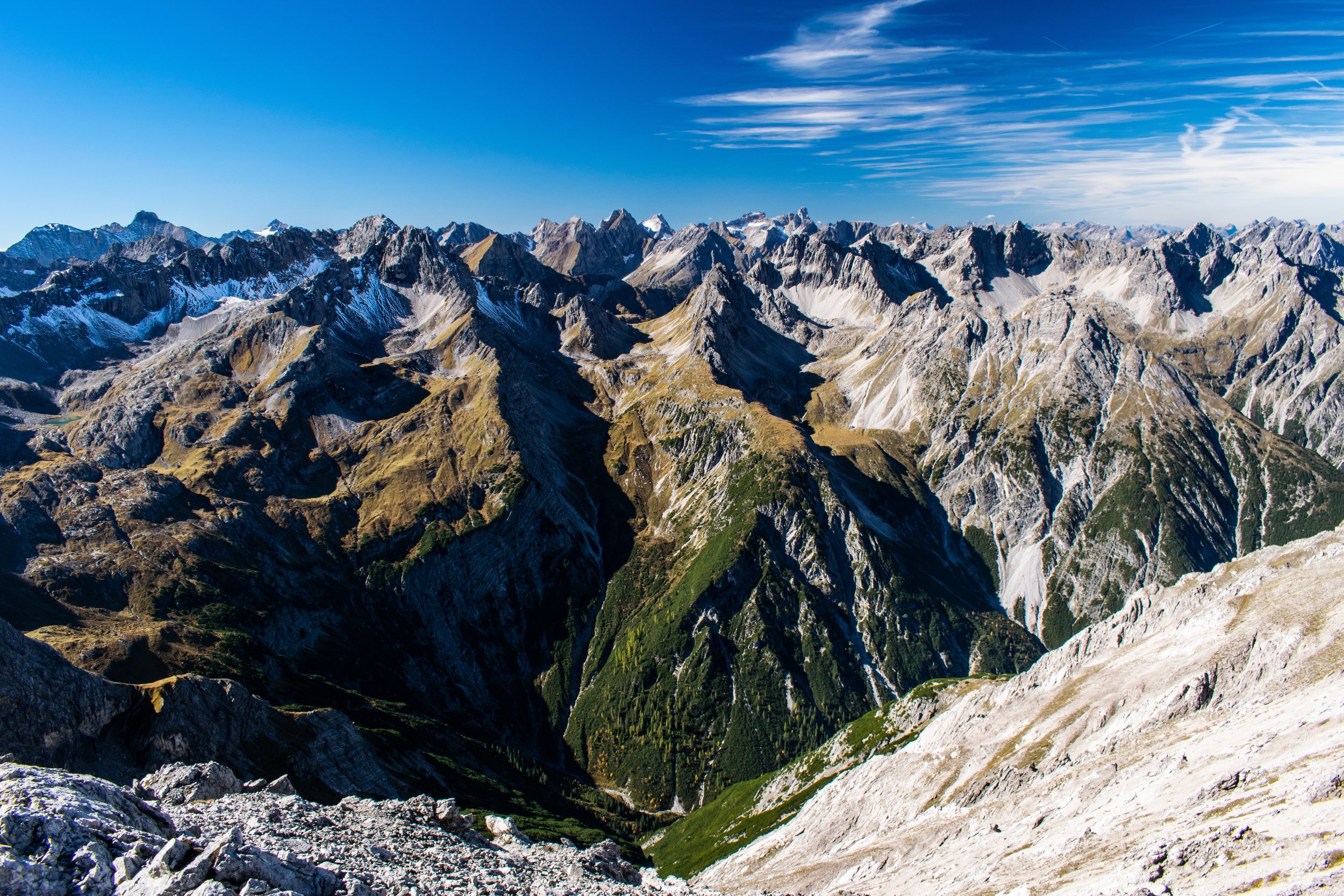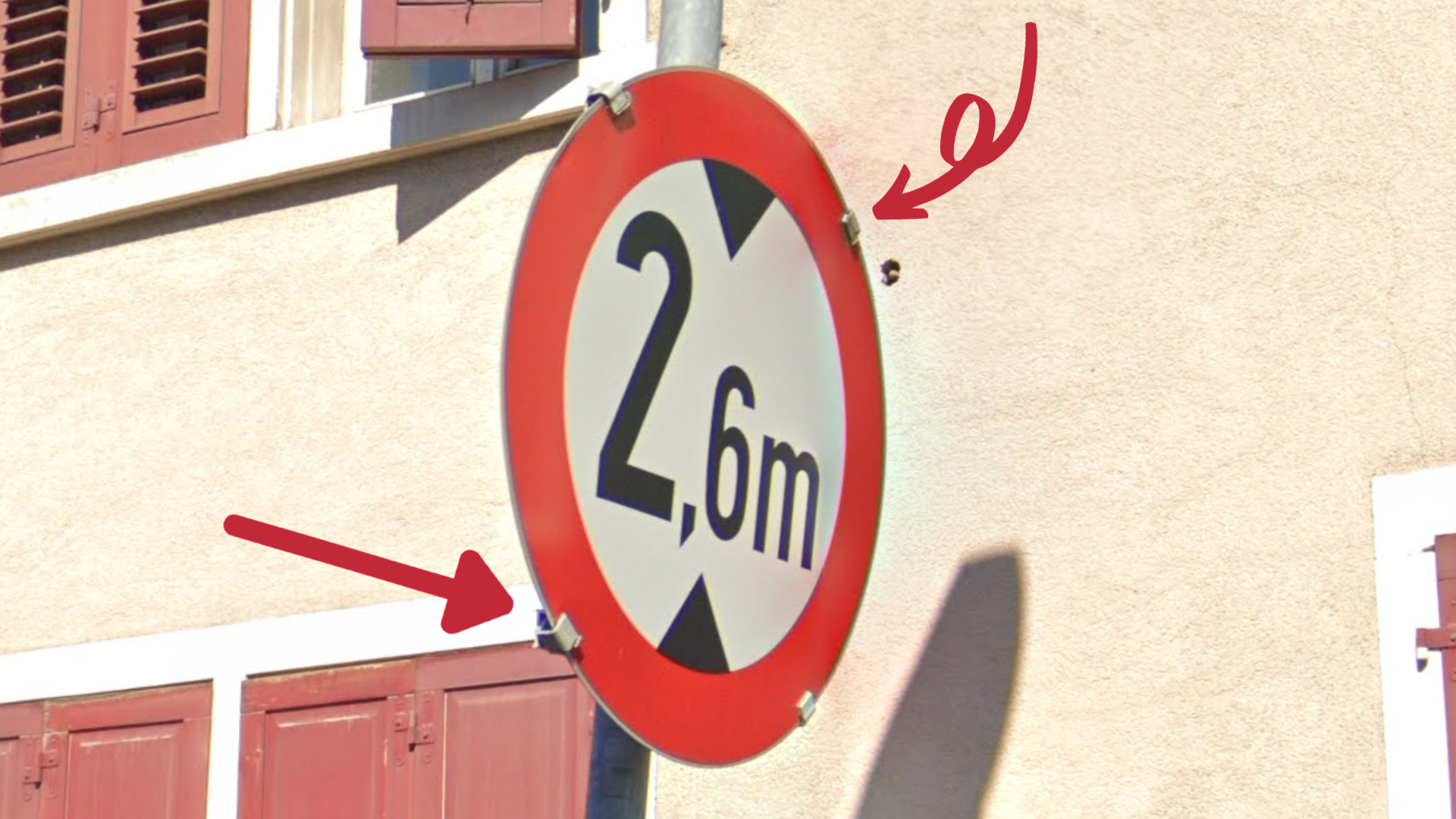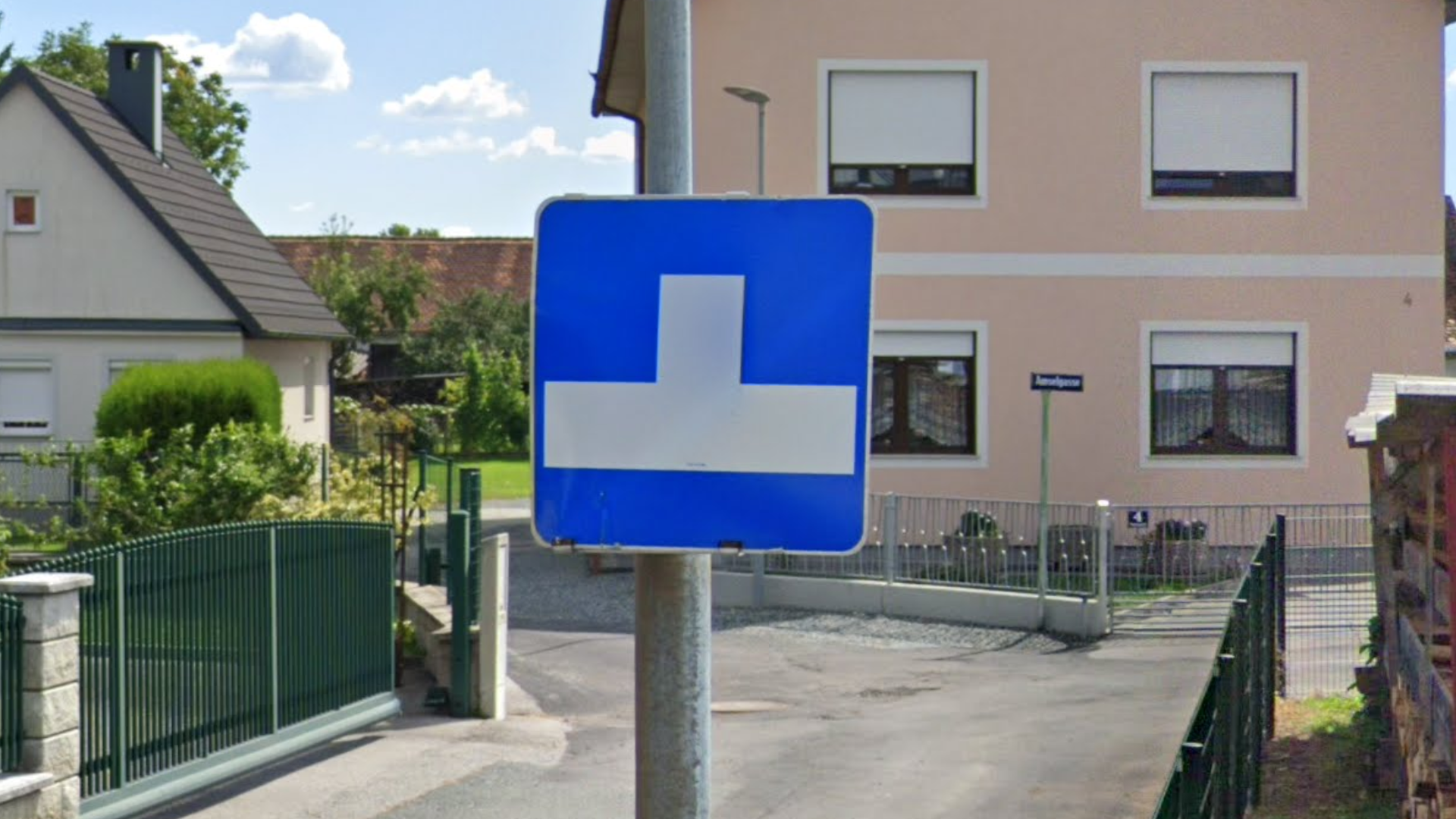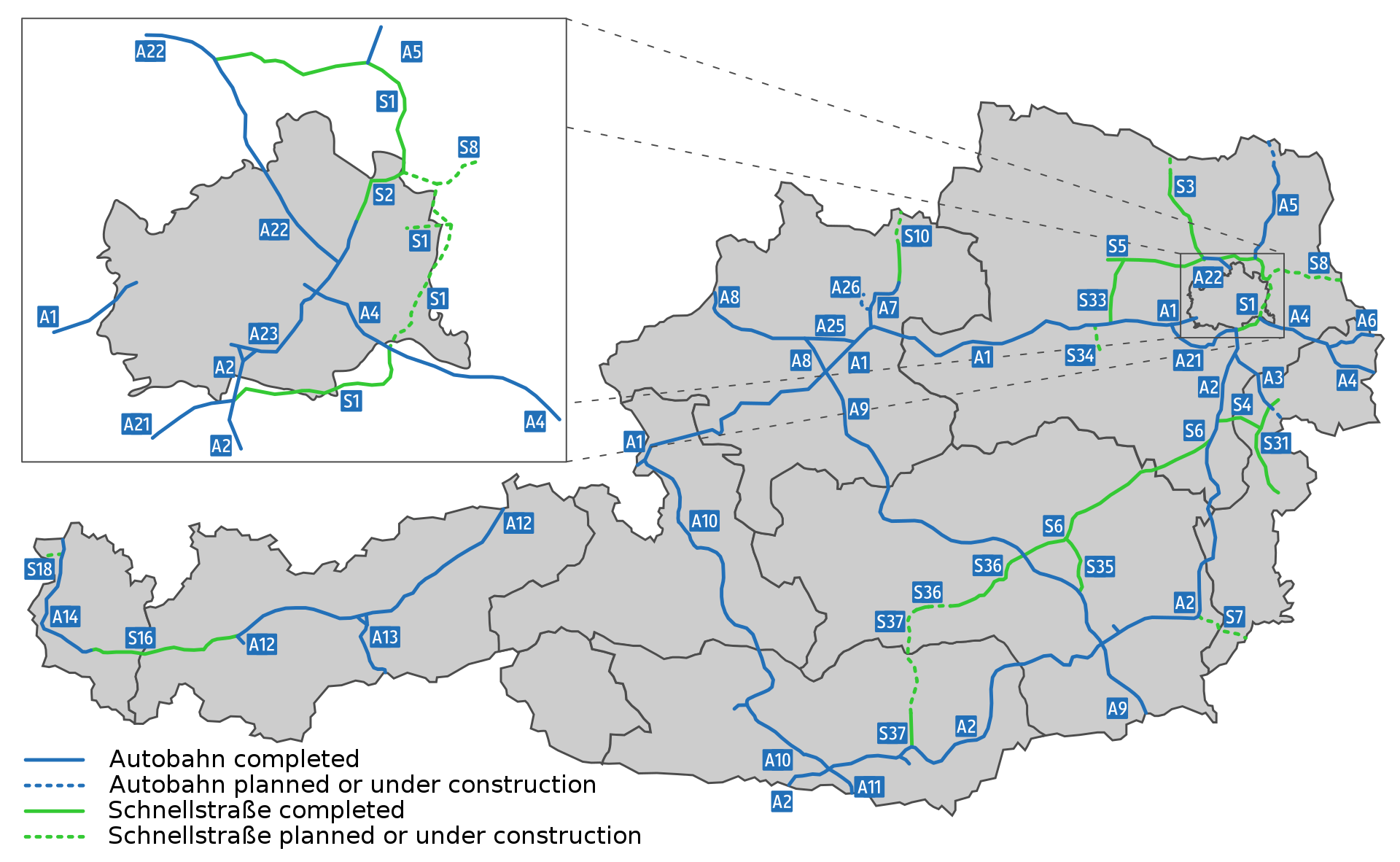
Austria
Austria uses white bollards, with a black top. The colour of the reflector is (dark) red or dark grey.
Many bollards also feature a small nipple-shaped black cap on the top. Bollards sometimes have a snow pole on top.
NOTE: Slovenia and Montenegro use the same bollards, but with bright red reflectors instead of grey or dark red. Germany uses simple white bollards with grey reflectors.
Alpine architecture is common in Austria and other countries in the Alps. Houses commonly have distinct light coloured walls, with wooden elements such as balconies or panelling around the top floor, with dark-coloured wooden roofs that extend outward. The roofs can sometimes be angled downward at the front and back. In addition, houses are also often multi-storeyed.
NOTE: Germany uses similar architecture in its southern states.
The official language of Austria is German. The German language uses the special letters Ä, Ö, Ü and ß.
NOTE: The other majority German-speaking countries with coverage are Switzerland and Germany. In addition, German is spoken in East Belgium and the Italian province of South Tyrol.
You can tell the three German-speaking countries apart by camera meta alone:
Austria only has Generation 3 and Generation 4 coverage (the only exceptions being Generation 2 on one road in Burgenland, and several ski resort trekkers).
Germany only has Generation 4 coverage. (the only exceptions being spills and trekkers)
Switzerland car coverage is always low-cam. This can be recognized by the much bigger car blur.
Similar white signs with a blue outline and unique font can also be seen at the entrance of towns.
NOTE: Germany uses yellow town entrance signs with a black outline.
Elevation is very important when region-guessing Austria based on landscape alone.
The central and western parts of Austria are the most mountainous. The flatter areas are found in the east, mostly near the borders. Note that “flat” is a relative concept in Austria: even in the flat areas, rolling hills are still common.
White kilometre markers can be found in Vorarlberg as well as on a road in western Salzburg.
Green “Güterweg” signs are found in Burgenland.
In Lower Austria, you may find signs with yellow and blue sign borders, corresponding to the flag of the region.
Vineyards are limited to the far eastern part of the country.
You can find a very precise map here. Notably, there are a lot of vineyards close to Vienna and around Lake Neusiedl.
The highest parts of the Alps are found in the west and central parts of the country.
The tallest mountains are found in the panhandle of Austria, on the Italian border. These mountains can be recognized by their generally sharper peak and grander appearance.
Most other major cities in Austria also have their own unique street signs.
NOTE: Many of the arbitrary blue ones can look similar, but the 4 listed in the graphic can be differentiated by:
Vienna - District Number
Salzburg - Unique Font
Klagenfurt - Irregular White Border
St Polten - Rounded White Border
You can click the image to enlarge it.








































